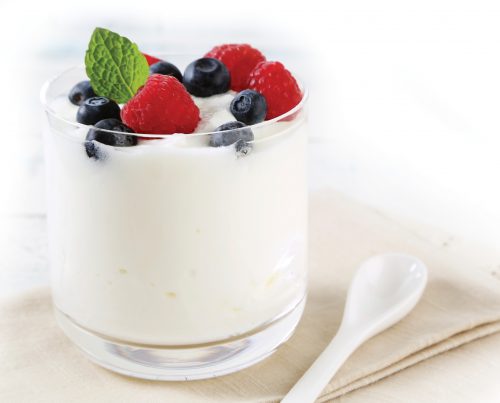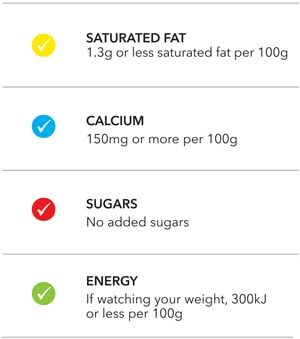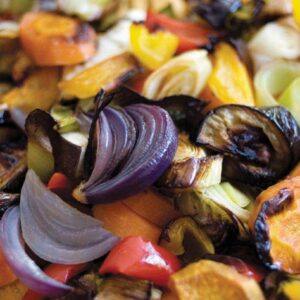
Natural yoghurt is a great food for every day — as a snack, part of breakfast, in a smoothie, or even as a cream alternative.
What’s available
These days there’s a wide variety of natural yoghurts available in supermarkets, and most tend to be low in energy and contain good amounts of calcium and protein. What else is there to consider when we’re choosing natural yoghurt?
Saturated fat
Saturated fat is the fat we want to keep to a minimum in our diet, as too much can lead to high cholesterol and cardiovascular disease. While some dairy products contain high amounts of saturated fat, there is evidence that the total make-up of the food may be more important than the amount and type of fat when predicting its effect on health. For example, the negative effect of saturated fat in yoghurt on heart health may be counterbalanced by the protein, calcium or other component in the yoghurt. Much more research is needed around this theory so, in the meantime, the Heart Foundation recommends reducing saturated fats in our diet and choosing reduced-fat yoghurt. Luckily, there are plenty of low-fat natural yoghurts to choose from. We recommend choosing natural yoghurt with 1.3g or less saturated fat per 100g.
Tip
Go Greek without the sat fat. Traditional Greek yoghurt is higher in saturated fat, so look for a lower-fat version.
Calcium
The recommended dietary intake of calcium for most adults is 1000mg per day and, for women over 50 and men over 70, it is 1300mg. Calcium is needed for bone health and has been associated with a lower risk of some cancers, such as colorectal cancer. Yoghurt is a very useful way of getting calcium into our diets. We recommend choosing natural yoghurt with 150mg or more calcium per 100g.
Sugars
Natural yoghurt contains lactose, the natural sugar in milk. Some brands add sugar to sweeten the yoghurt, eg. Yoplait Natural Sweetened. It’s important to read the ingredients list to see if sugar is listed. We recommend choosing natural yoghurt with no added sugar.
Tip
Add a sliced banana or berries to add sweetness, if needed.
Energy
Some yoghurts, particularly the gourmet varieties, can be higher in fats and added sugars and therefore higher in kilojoules. If you are watching your weight, we recommend choosing yoghurt with no more than 300kJ per 100g.
Tip
Yoghurt can be a useful source of protein. The protein content ranges from 3.2—8.2g per 100g in the products we sampled.
Probiotics
The Australia New Zealand Food Standards Code states that yoghurt must contain 1,000,000 live bacteria per gram. The survival of the cultures is dependent on storage and how old the yoghurt is. Many yoghurts state they contain probiotics, which is great, but if they’re claiming a specific benefit associated with the probiotics, we need more information. Firstly, is there scientific evidence supporting the claimed benefits of the probiotic when used daily at the recommended serve size? And, secondly, has the yoghurt been tested to confirm it delivers the required amount of probiotics up to the best before date?
How to choose
Use the criteria below to compare natural yoghurts:

Article sources and references
- Australia New Zealand Food Standards Code. Standard 2.5.3 Fermented milk products www.legislation.gov.au/Details/F2015L00413 Accessed June 2016https://www.legislation.gov.au/Details/F2015L00413
- Ebner S et al. 2014. Probiotics in dietary guidelines and clinical recommendations outside the European Union. World Journal of Gastroenterology. 20:16095–100 Heart Foundation www.heartfoundation.org.nz Accessed June 2016https://www.heartfoundation.org.nz/
- Hill C et al 2014. Expert consensus document: The International Scientific Association for Probiotics and Prebiotics consensus statement on the scope and appropriate use of the term probiotic. Nature Reviews Gastroenterology & Hepatology 1: 506–14https://www.ncbi.nlm.nih.gov/pubmed/24912386
- Ministry of Health. 2006. Nutrient reference values for Australia and New Zealand: Including Recommended Dietary Intakes. Canberra: Commonwealth of Australiahttps://www.nhmrc.gov.au/sites/default/files/images/nutrient-refererence-dietary-intakes.pdf
- Rice BH. 2014. Dairy and cardiovascular disease: A review of recent observational research. Current Nutrition Reports 3:130–8https://www.ncbi.nlm.nih.gov/pmc/articles/PMC4006120/
www.healthyfood.com










